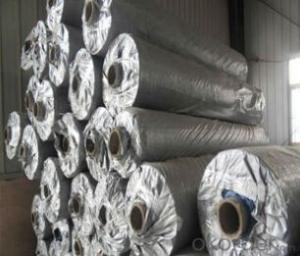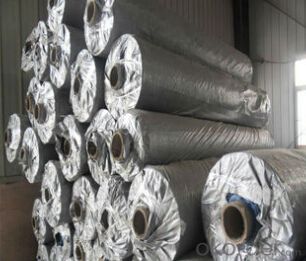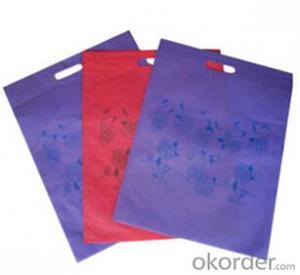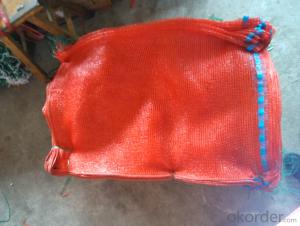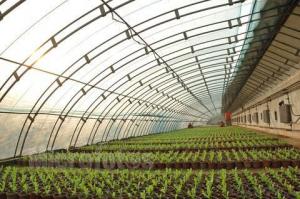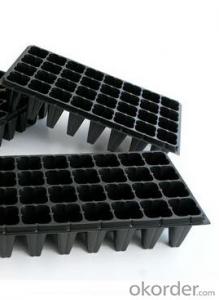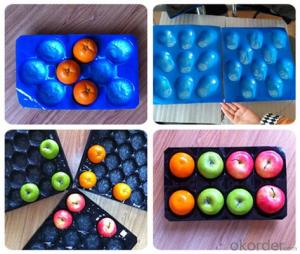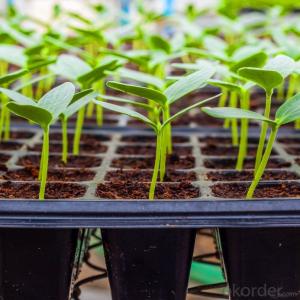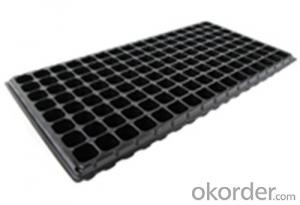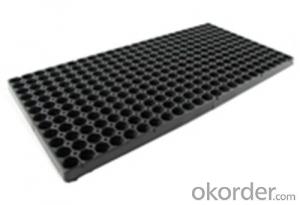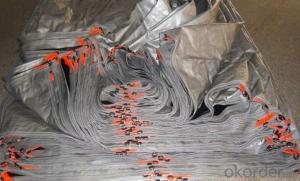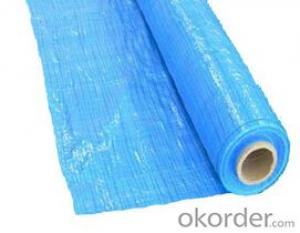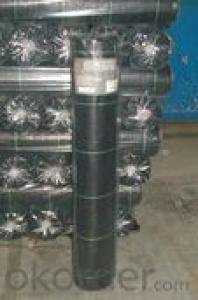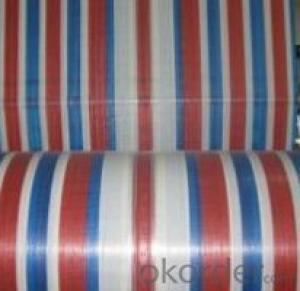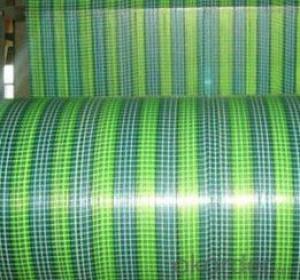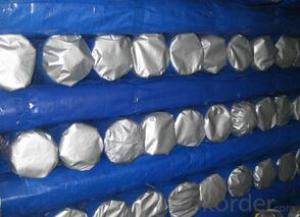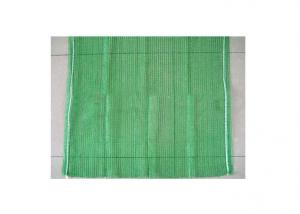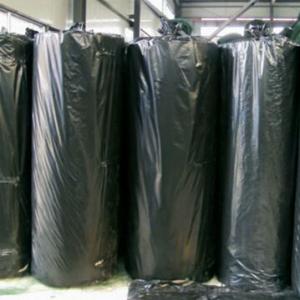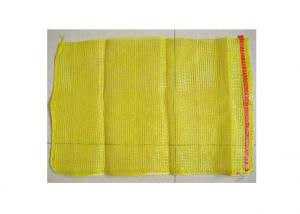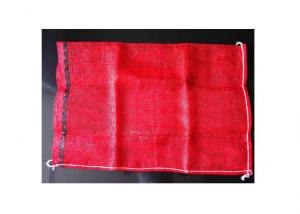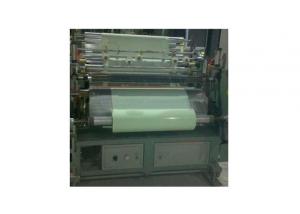PP tarpaulin in rolls
OKorder Service Pledge
OKorder Financial Service
You Might Also Like
PP woven fabric
Ground cover
Geotextile sheet
• Specification :
- Material-Polypropylene
- Weight : from 50/ 60/ 70gr/sq.m to 200gr/sq.m
- Weaving condition: 10x10/sq.inch, 12x12/sq.inch, 18x11/sq.inch, 24x12/sq.inch
- Black color with colored identification thread at each salvage
- UV treated
• Application :
1) Silt Fence:
- Water-run off and sediment control
2) Weed Control Mat :
- Inhibits weed growth
- Allow soil to breath/Water to permeate
3) Other application (Ground cover/ Geotextile sheet etc.) of PP woven fabric also available
• Roll Size :
- Width : 0.91m(3feet), 1,82m (6feet) Maximum 4.5m (14.76feet)
- Length : 10m,50m,100m
- Various roll size available according to customer’s request
• Packing : Export standard roll packing with paper core
- Q: Can plastic materials typically used in agriculture be repurposed for landscaping or construction?
- <p>Yes, agricultural plastic products can indeed be used for other purposes including landscaping and construction. For instance, plastic pipes can be used for irrigation systems in landscaping, and plastic sheets can serve as protective covers in construction. However, it's important to ensure that the plastic is suitable for the intended use, considering factors such as durability, UV resistance, and environmental impact. Repurposing agricultural plastics can contribute to sustainability by reducing waste and promoting the circular economy.</p>
- Q: This question asks whether the use of plastic mulch in agriculture can help in reducing soil erosion and waterlogging.
- <p>Yes, agricultural plastic mulch can indeed reduce soil erosion and waterlogging. By covering the soil, plastic mulch minimizes direct contact between raindrops and the soil surface, which helps to prevent soil particles from being dislodged and washed away. This reduces the risk of soil erosion. Additionally, plastic mulch can improve soil structure and drainage, allowing excess water to evaporate more effectively, thus preventing waterlogging. However, it's important to note that the use of plastic mulch is a part of integrated soil management practices and should be used in conjunction with other measures to maintain soil health and productivity.</p>
- Q: How do agricultural plastic products help with soil erosion prevention?
- Agricultural plastic products, such as mulch films and erosion control blankets, help with soil erosion prevention by providing a protective layer on the soil surface. These products act as a barrier, preventing rainwater and wind from directly impacting the soil. This reduces the erosive forces and helps to retain moisture in the soil, promoting better plant growth and preventing the loss of topsoil. Additionally, agricultural plastic products can also help to stabilize slopes and prevent runoff, further contributing to soil erosion prevention.
- Q: Can ground cover plants be used to create a green roof?
- Yes, ground cover plants can be used to create a green roof. They are an excellent choice for green roof systems as they provide insulation, help manage stormwater runoff, and enhance the aesthetic appeal of the roof. Ground cover plants also require less maintenance compared to other types of vegetation commonly used in green roofs.
- Q: What materials are nursery trays made from?
- Nursery trays are commonly made from plastic or recycled materials such as polystyrene, polypropylene, or biodegradable materials like molded pulp or coconut coir.
- Q: This question asks about the methods employed by farmers to handle the waste generated from the production of agricultural plastics.
- <p>Farmers manage waste from agricultural plastic production through various methods. They often recycle plastic materials, such as plastic film and containers, by collecting and sending them to recycling facilities. Some farmers use biodegradable plastics that break down naturally over time, reducing environmental impact. Additionally, waste management practices like proper disposal in designated landfills and the use of composting for certain types of plastic waste are employed. Innovations in technology have led to the development of machinery that can process plastic waste into usable materials or energy. Education and awareness programs also play a role in promoting sustainable waste management practices among farmers.</p>
- Q: i bought a toddler bed and am wanting to paint it. i dont know what kind of plastic it is. what kind of paint should i buy and how should i apply it to make it look the best
- Krylon Fusion paint for plastics is a good choice. You can buy it in spray cans and little tins. To get a good even coat on the plastic it's best to paint it with a brush, and take your time.
- Q: Can ground cover be used to create a colorful landscape?
- Yes, ground cover can definitely be used to create a colorful landscape. There are various types of ground cover plants available in a wide range of colors, from vibrant flowers to colorful foliage. By carefully selecting and arranging these plants, one can create a visually appealing and colorful landscape that adds beauty and interest to the overall design.
- Q: How are plastic irrigation valves used in irrigation systems?
- Plastic irrigation valves are used in irrigation systems to control the flow of water to different sections or zones. They are typically installed at key points along the irrigation lines and are connected to a controller that allows for automated or manual operation. These valves open and close to regulate the water flow, ensuring that each zone receives the required amount of water at the right time. Plastic valves are preferred for their durability, affordability, and resistance to corrosion, making them an essential component in efficient irrigation systems.
- Q: What is the purpose of the holes in nursery trays?
- The purpose of the holes in nursery trays is to provide drainage for excess water, preventing waterlogged soil and helping to promote healthy root growth in plants.
Send your message to us
PP tarpaulin in rolls
OKorder Service Pledge
OKorder Financial Service
Similar products
Hot products
Hot Searches
Related keywords
